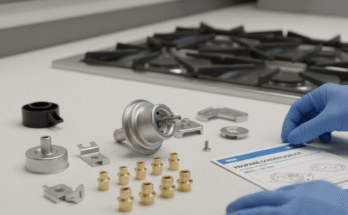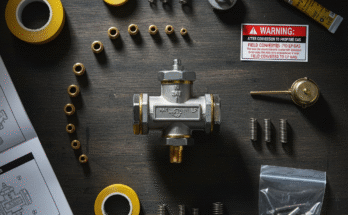In the middle of the night, during a holiday, or while on a business trip, a dental emergency can strike. A filling pops out, a crown becomes loose, or a chipped tooth leaves a sharp, irritating edge. In these moments of panic and discomfort, an over-the-counter (OTC) dental repair kit from the local pharmacy can seem like a miracle solution—a quick, affordable fix to buy you time until your dentist’s office opens.What Dental Repair Kits Do Dentists Recommend
But what do dental professionals actually think about these DIY kits? Do they recommend them, and if so, which ones?
The answer is complex, but the consensus is clear: At-home dental repair kits are a temporary bridge, not a permanent repair. They are for emergency palliation and protection,
and should never be used as a substitute for professional dental treatment. When used correctly, however, a few specific types of kits can be a valuable addition to your first-aid supply. The key is understanding their limitations and knowing the specific, high-quality products that contain materials similar to what dentists use for their own short-term fixes.
The Professional Stance: Temporary vs. Permanent
The most crucial distinction a dentist will make is between a temporary and a permanent solution. When you use an OTC kit, you are engaging in first aid, not dentistry. Understanding the risks of crossing that line is paramount.
The Dangers of DIY Permanent Dentistry
Dentists strongly advise against any attempt to use at-home kits for a permanent fix, and they generally caution against kits that promise to create a new, perfectly shaped prosthetic tooth. Here is why most dental professionals object to “DIY Dentistry” for permanent repairs:
Failure to Treat the Underlying Issue:
A lost filling or a fractured tooth is a symptom of a larger problem, often decay. An OTC kit simply seals the hole, potentially trapping existing bacteria and decay. This decay can progress unnoticed beneath the patch, leading to a more severe infection, necessitating a root canal, or even causing tooth loss. A dentist, conversely, meticulously cleans out all decay and bacteria before placing a permanent restoration. The decay removal process requires specialized instruments and anesthesia that are not available to the average consumer.What Dental Repair Kits Do Dentists Recommend
Compromised Bite and Alignment:
A proper filling or crown is meticulously shaped and polished to ensure it aligns perfectly with your opposing teeth. Failure to achieve this correct “bite”—even a difference of a fraction of a millimeter—can lead to serious complications, including jaw pain (TMJ issues), chronic headaches, and further cracking or chipping of the other teeth due to uneven pressure distribution.
This is a highly skilled aspect of dentistry that cannot be replicated with a spatula and a mirror at home.
Many temporary kits are simply pushed into the cavity, creating an uneven surface that constantly strains your jaw.

Lack of Proper Adhesion:
Professional filling materials and cements are designed to chemically and mechanically bond to the tooth structure using multi-step bonding agents and curing lights. Most OTC materials, often based on zinc oxide-eugenol or calcium sulfate, simply sit in the cavity or on the tooth surface, retained only by the shape of the tooth’s undercuts. They lack the strength and seal to resist chewing forces, making them prone to falling out, leaking, and creating microscopic spaces for bacteria and liquids to seep in, further compromising the tooth.
Toxicity and Irritation Risk:
While the materials in reputable kits are generally safe for temporary contact, improper, prolonged, or deep application can irritate the sensitive dental pulp (nerve tissue) or surrounding soft tissues, worsening the pain and potentially causing inflammation or infection where none existed before. Always read the label for ingredients and ensure you are not allergic to common components like Eugenol.
The Golden Rule: If you have a dental emergency, use a temporary kit for relief, but call your dentist immediately. The professional fix is the only one that can prevent further long-term damage and save your tooth.What Dental Repair Kits Do Dentists Recommend
Dentist-Approved Use Cases for At-Home Kits
When a dental professional discusses “recommendations,” they are referring to specific scenarios where a temporary kit can mitigate an emergency or provide comfort and protection:
| Emergency Scenario | Recommended Kit Component | Primary Goal |
| Lost Filling or Crown | Temporary Filling Material or Dental Cement | Protect the exposed tooth or nerve (dentin/pulp) from temperature and bacteria. |
| Sharp Edge of a Chipped Tooth | Dental Wax or Temporary Filling Material | Cover the sharp edge to prevent cutting the tongue, cheek, or gums. |
| Orthodontic Irritation | Dental Wax (Standard) | Cover sharp wires or brackets causing painful mouth sores. |
| Lost Knocked-Out Tooth (Avulsion) | A Tooth Saver Vial (in a first-aid kit) | A specific container with a preservation solution or milk to keep the tooth viable until the dentist can reimplant it. |
| Broken or Cracked Denture | Specific Denture Repair Adhesive Kit | Temporarily reattach a piece of the denture to restore limited function and aesthetics until a lab can repair it properly. |

Key Components and Product Types Dentists Trust (as Temporary Solutions)
While dentists do not officially “endorse” a specific brand in the way a celebrity might, two brands consistently appear in professional discussions and are widely available in pharmacies for temporary relief: DenTek and Dentemp.
These products are generally well-regarded because they contain materials very similar to the ones dentists use for short-term fixes in their own practices, primarily Zinc Oxide Eugenol (ZOE) or Calcium Sulfate.
1. Temporary Filling and Cement Kits
These are the most common and professionally-accepted emergency kits. They contain a thick paste or putty designed to seal an open cavity or re-secure a cap.
- Product Examples Mentioned by Professionals:
- DenTek Temparin Max Advanced Repair Kit: Often cited for its “maximum strength” formula. It is a single-component, no-mix material designed for lost fillings and to secure loose caps or crowns.
- Dentemp Recap-It or Repair-It: Another popular option that contains specialized dental cement for reattaching crowns or caps, or a filling material for lost fillings.
- How to Use Safely (As Advised by Dentists):
- Clean: Gently rinse the area with warm salt water to remove food debris.
- Apply Sparingly: Only use enough material to cover the exposed area and stop sensitivity.
- Check Your Bite: Close your mouth gently to ensure the material does not interfere with your bite. If it feels too high, you must adjust it immediately.
- Avoid Chewing: Do not chew on the repaired tooth for at least 2–3 hours to allow the material to set, and avoid that side of the mouth entirely until you see your dentist.
2. Dental Wax
This is one of the most benign and universally recommended items for minor irritation. Orthodontic Wax is a staple in dental first-aid kits because it is simple, non-toxic, and effective for covering sharp edges.What Dental Repair Kits Do Dentists Recommend
3. Denture and Appliance Repair Kits
These kits, often sold by brands like Dentemp, are highly specialized and come with a more significant professional warning. A poorly repaired or re-adhered denture can change the fit, leading to painful rubbing, chronic mouth sores, and an improperly aligned bite. If you use a denture repair kit, it is a band-aid. You must still see your dentist for a proper, durable, and structurally sound repair.
Prevention is the Best Repair Kit
The most effective “kit” is a consistent routine that minimizes the risk of emergencies. Dentists will always recommend investing in these long-term preventative measures over relying on a temporary fix:
- Routine Check-ups and X-rays: Regular visits allow a dentist to identify and address small cavities before they become large enough to cause a filling to fall out. They can also check the integrity of old fillings and crowns before they fail.
- A Custom Night Guard: If you grind or clench your teeth (bruxism), a custom-fitted guard protects your teeth and expensive dental work (fillings, crowns, veneers) from cracking. This protection is far superior to cheap, boil-and-bite mouthguards.
- Avoiding High-Risk Foods: Minimize consumption of overly sticky (caramels, taffy) and extremely hard foods (ice, hard candies, popcorn kernels) that are the primary culprits for pulling out fillings and cracking teeth.

By combining prudent preparation—having a dentist-approved temporary kit on hand—with diligent preventative care,
you ensure that if an emergency does occur,
you are prepared for immediate relief while keeping your long-term dental health a priority.




